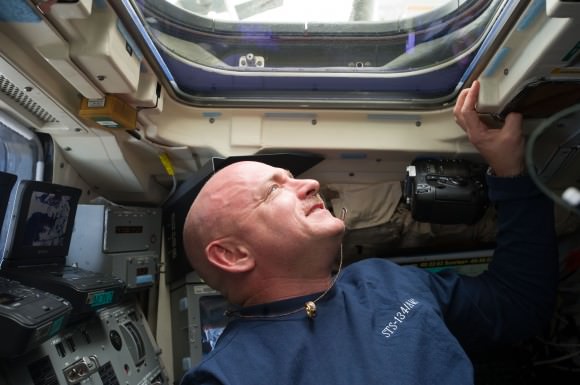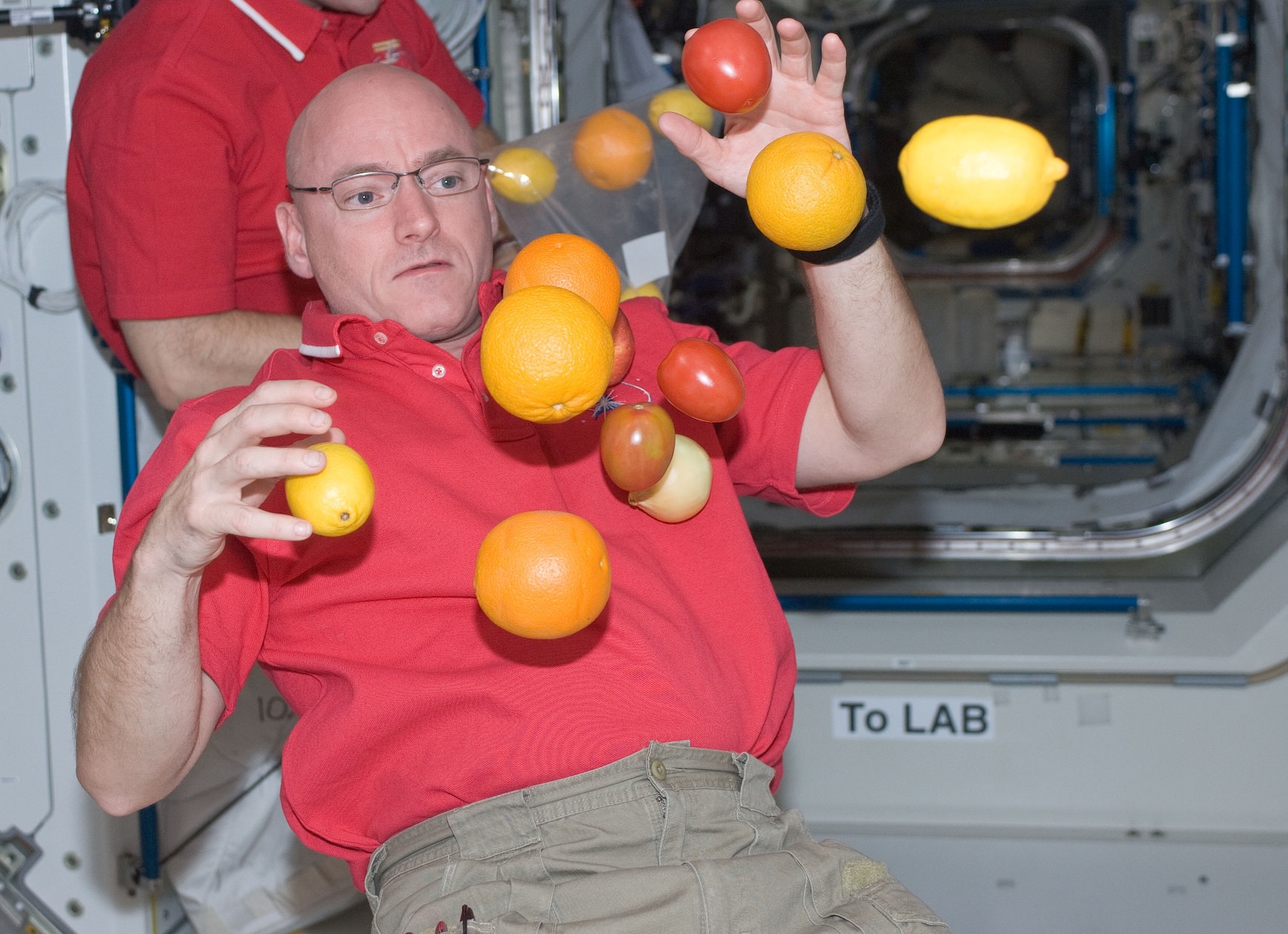Identical twin astronauts, one headed to space for a year and the other happily at home. Imagine just how excited health researchers are by the prospect of this situation which yes, is happening for real. Scott Kelly is preparing to blast off on a lengthy mission to the International Space Station in 2015 while his retired twin, Mark, will serve as a control.
The 50-year-old men will do a suite of experiments before, during and after the mission to see how much (if at all) Scott’s body changes from his brother in the long term. This ranges from examining their DNA, to their vision, and even changes in the gut.
“These will not be 10 individual studies,” stated Craig Kundrot of NASA’s human research program at the Johnson Space Center. “The real power comes in combining them to form an integrated picture of all levels from biomolecular to psychological. We’ll be studying the entire astronaut.”
One experiment will examine telomeres, which NASA says are “molecular caps” that sit on the ends of human DNA. As the theory goes, these telomeres are affected in space by cosmic rays (high-energy particles originating from outside the solar system) — which could speed up the aging process. If Scott’s telomeres change after the mission, this could help determine if space is linked to rapid aging.
Another experiment asks how the immune system alters. “We already know that the human immune system changes in space. It’s not as strong as it is on the ground,” said Kundrot. “In one of the experiments, Mark and Scott will be given identical flu vaccines, and we will study how their immune systems react.”
Then there are experiments looking at gut bacteria that help digestion, seeking out how human vision changes, and even a phenomenon known as “space fog” — how some astronauts find themselves losing alertness in orbit.
Although the twins have inherent fascination for researchers and sociologists, the Kellys themselves have emphasized that to them, having an identical counterpart is something that always was.

“We didn’t know anything differently and, you know, he’s not my clone,” Scott said in a joint 2010 NASA interview with Mark.
“You know, a lot of times people would ask, ‘So what’s it like to be a twin?’ and … the response I would usually give is, ‘Well, what’s it like not to be a twin?’ I mean, it’s just, it is,” Mark added, to which Scott responded, “It’s more like … he’s my brother but we just happen to have the same birthday, to me.”
Scott will leave Earth with Russian cosmonaut Mikhail Kornienko in 2015 for the first one-year mission in space since a handful of lengthy stays on the former Russian space station, Mir, in the 1990s. Scott will serve as Expedition 43/44 flight engineer and have the distinction of commanding two space station missions, Expedition 45 and 46. (He also commanded Expedition 26 in 2010.)
Source: NASA

